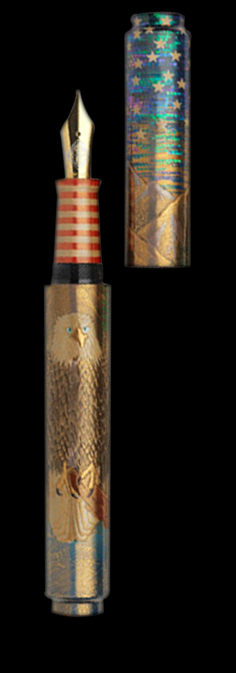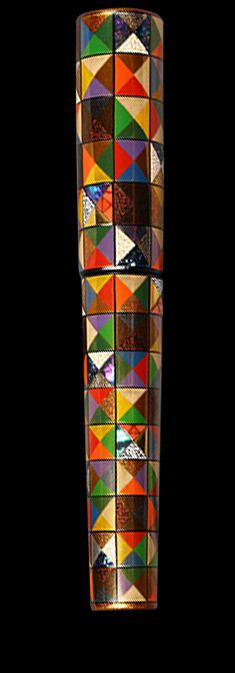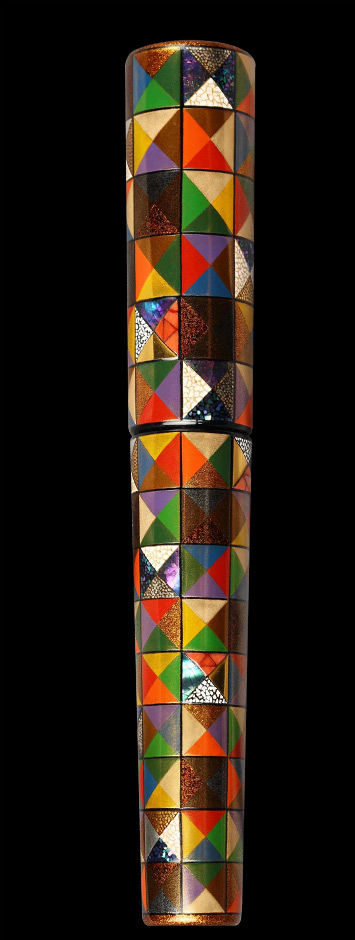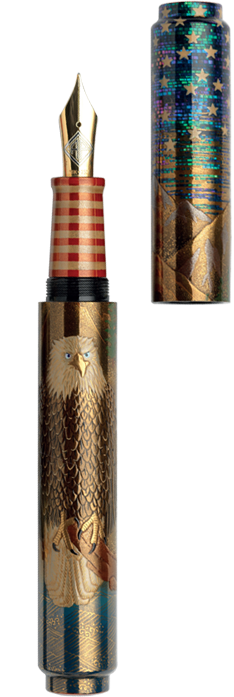JAPANESE MAKI-E ART


Japanese Maki-e Art dates back 1400 years and is a highly respected and rare form of art. There are but a few living Masters of this art form who continue to keep this tradition alive. A skilled Make-Shi (artist) has begun his learning at an early age and works as an apprentice to his master for many years before he may set out on his own.
Maki-e art features Urushi lacquer (sap from the Urushi tree native to Japan), along with gold powder and other precious metals and powders painted and inlaid into the most exquisite of designs that require great skill and precision. Some of the Maki-e Shi are considered ‘National Treasures’ in Japan.
Urushi sap is in itself a very special and natural source of lacquer that is unique to the Urushi tree found only in South East Asia, Japan and the Korean Peninsula. Urushi sap is much like blood is in the human body; it helps heal cracks on the trunk of the Urushi tree. There are over 600 different species of Urushi trees and the Urushi collected from these trees must be collected by hand and with great skill. The sap that is removed by hand from these trees is then processed meticulously to make several different kinds of Urushi that are used for Maki-e.
Maki-e is an art of precision and hard work, befitting the character of the people of Japan. It requires tremendous focus and attention to minute detail. The Maki-e Shi use very fine brushes made of the finest hair from various different animals. There are many different brushes and spatulas that are used in the process of Maki-e depending on the technique being applied. In the process of Maki-e there are several steps that are taken and patiently applied to the object over months before an object can be completed.
There are many different techniques of Maki-e requiring varied levels of expertise. The process is begun with ‘Shitaji-Nuri’ which is preparation of the ground of the object with Urushi. This process may sound simple since it involves the cleaning of the object but it is this Shitaji-Nuri that gives the finished Maki-e object its guaranteed lifetime of hundreds of years. Once this process is completed the Maki-e Shi must prepare the object for Naka Nuri or UwaNuri which is preparation for final painting on the object. Having prepared the object the Maki-e Shi must now apply the required artwork with the use of very fine brushes and knives and the sprinkling of gold powder followed by the several applications of lacquer and inlay of precious metals or pearl as required. The many levels of technique that are found on our pens to name a few are Hira Maki-e, Togidashi Maki-e, Taka Maki-e, Shishai Togidashi Maki-e and Bokashi Maki-e.
At AP Limited Editions, we pride ourselves for having created some of the most exquisite works in Maki-e ever found on writing instruments. We are also privileged to have some of the finest and most exceptional Maki-e Shi in Japan working with us to create these heirlooms that take several months from conception to creation.

The making of the Splendid Synergy - Technique Details
This grand pen features 105 squares with 4 triangles within each, inlaid with pieces of 18 karat gold, abalone, mother of pearl, coral, eggshell, and overlaid with colored Urushi. These triangles work in complete synergy following the cylindrical body of the pen that is wider on top and tapers down to the bottom. This stunning pen has been painstakingly crafted over a ten month period.
Solid and striking, precise and perfect, Splendid Synergy is an immutable testimony to the vast potential of the artistry of Maki-e and the complete skill of the human hand of one of our favorite Maki-e artists.
 |
 |
The pen body is tapered and the design demands triangles to be placed in perfect precision.Geometric delta shaped Coral, Mother of Pearl Eggshell has to be cut carefully and precisely. Every square is painted with Urushi and sprinkled with charcoal powder and hardened by Urushi before the surface is repeatedly burnished and finished. |
 |
 |
Once the coral is cut and polished and cut into delta shapes, four pieces of smaller triangles are used to fit the large triangle. And because the pen is tapered, the shapes have to fit the space precisely. Every large triangle is different in size so this process requires great skill. |
 |
 |
Gold, Silver, Abalone shell, Quail shell and other shells are cut and placed just like the Coral pieces described in the steps above. Each step of the process requires repeated burnishing, rubbing and polishing. |
 |
 |
The parts of the pen that are raised with charcoal powder and the parts carved are painted with Urushi followed by sprinkling Gold and other powders to seal and finish each section. |

Technique Details for The Great American Bald Eagle
As a tribute to our Homeland, The Great American Bald Eagle pen was launched on AP Limited Editions’ 10th Anniversary in February 2016. This limited edition series sold out within three weeks of the launch!
The technique used to produce this stunning pen is Shishiai Togidashi Maki-e. This technique is a combination of Taka Maki-e, Hira Maki-e and Togidashi Maki-e. Shishiai Togidashi Maki-e is the intricate combination of Taka (raised) Maki-e and Togidashi (burnished) Maki-e and the highest level of Maki-e requiring great skill.
Urushi lacquer and charcoal powder are used to create the main design in high relief. Then raised elements are smoothened to a gradient and
burnished to a uniform luster. This technique is often used in landscapes where such elements as rocks, clouds, or mountains are featured in a raised design that slopes gently to a flattened design.
The Maki-e technique uses powdered Gold or Silver. In addition to lacquerware that uses Gold or Silver, there is also lacquerware that uses a technique to add decorations using Shells. Some Shellfish emit beautiful rays like a rainbow such as the Turban Shell. The technique to adhere tiny crushed pieces of such shells onto the surface of lacquerware, like a mosaic, is called “Raden”.
The Sky: Very thinly sliced (0.8mm) Abalone Shell pieces have been used to create this stunning sky. These thick pieces have been carefully attached piece by piece to fit the curved surface of the pen.
Stars: Platinum powder and white Urushi were used to create the 50 stars.
Mountains: The raised Maki-e process of Taka Maki-e was used to create the relief of the majestic mountains. The base is applied with very fine
charcoal powder and Urushi. It is left to dry and then scraped with charcoal. Urushi is applied on the entire surface. Gold powder is sprinkled. The snow on mountains was achieved with Platinum powder.
The Eagle’s face and body was created in Taka Maki-e, the raised Maki-e technique to show a two dimensional view. The eyes of the Eagle have inlaid Yakougai (Turban Shell). The feathers were drawn and achieved by using a very fine brush covered with Urushi to draw fine lines which were then sprinkled over with Gold and Silver powders. This process is known as Tsukegaki 付描. Some of the feather outlines that were drawn were not covered with Maki-e powders. This process is called Kaki-wari.


